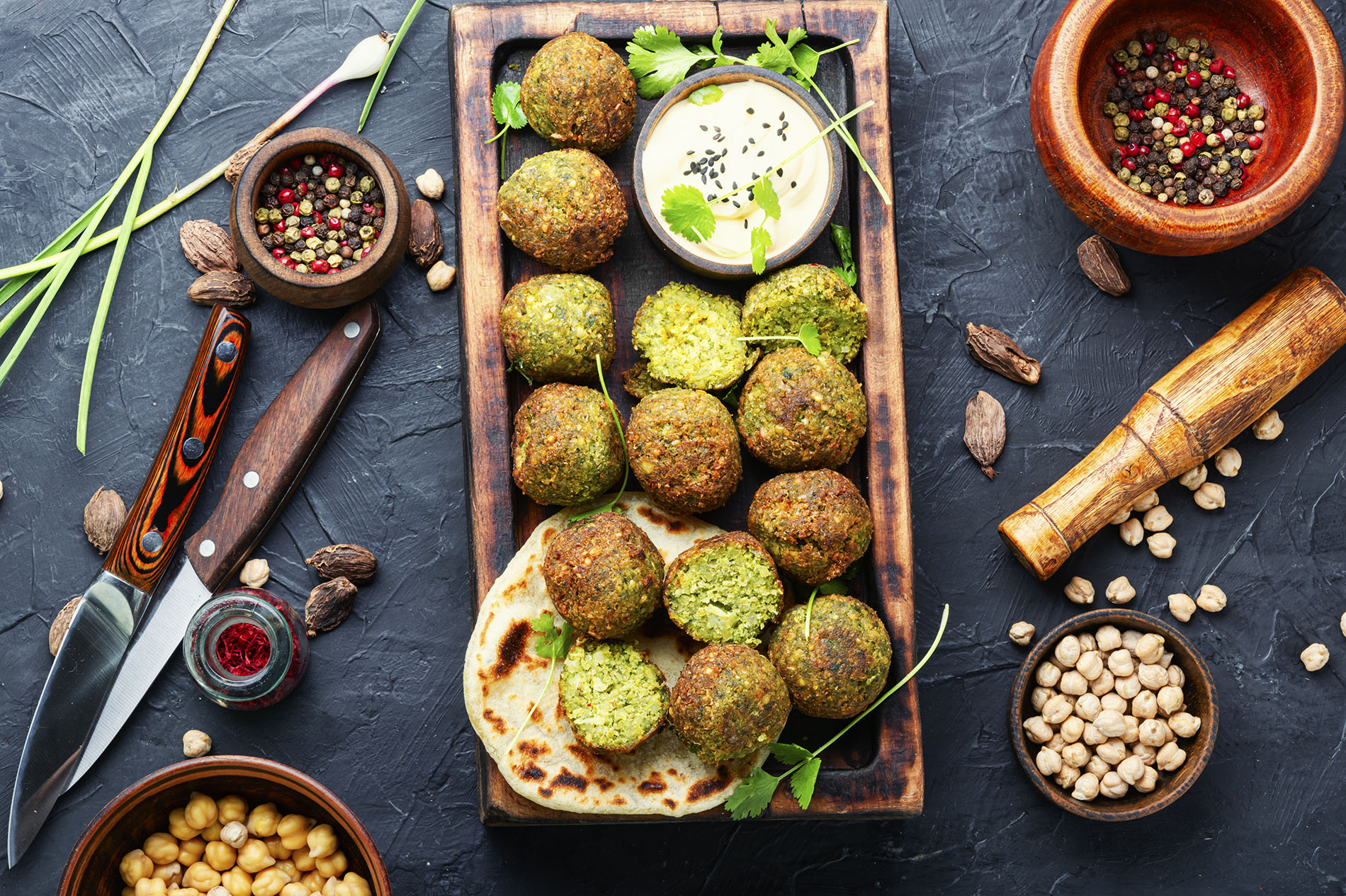Foodies adore it, and vegetarians devour it, just one look on social media sites like Instagram and you’ll see it is loved by many. Falafel may be one of the most popular foods among health foodies in America, but its origins are far from American. Here we will take a moment to discuss the origin behind this delicious plant-based food that even meat lovers can enjoy. Later I’ll share with you a traditional falafel recipe that I promise you, will leave you craving more.
A Controversial Origin
Falafel’s origin is highly debated. No one knows exactly who created the first falafel, but both Arab and Jewish cultures claim the food as their own. Some speculate that falafel was first consumed in Egypt around 1000 BC. Matter of fact, the Egyptians did have and consume beans that were fried in animal fat. Further evidence suggests it was created specifically by the Coptic Christians of Egypt, who historically chose the falafel as an alternative to consuming meatballs during Lent, an annual Christian holiday that precedes Easter.
With its unique shape and savory flavor, it’s no surprise that the falafel eventually gained worldwide fame, particularly in part due to the rise in popularity of vegetarian and vegan lifestyles.
Falafel’s Worldwide Popularity
Before falafel was famous among vegetarians in America, falafel was traded across the Middle East. With commercial ports in places like Alexandria, Gaza, and Beirut, falafel made its way throughout the region rather quickly. The recipe for falafel varies depending on which part of the Middle East the recipe hails from. Falafel can be made using just chickpeas, or fava beans, while some prefer to blend the two together.
The Lebanese were the ones who first topped their falafel with tahini sauce, a sesame seed puree. Today the combination of falafel and tahini are unmistakable and enjoyed by foodies around the world.
Serving Up Falafel
Making falafel is easy and fun. But before you go frying falafel in your kitchen be sure you know these top secrets to creating a successful falafel.
- Never use canned chickpeas. You may think you are simply saving time, but if you skip soaking your own dried chickpeas, you will compromise the falafel’s flavor.
- Dry soaked chickpeas well to remove any excess moisture.
- Make sure you use fresh garlic when making falafel. Dried garlic powder does not bring the same flavor to the dish.
- Use good quality peanut or olive oil for frying, ensure it is boiling prior to deep frying your falafel but does not exceed 356 degrees fahrenheit.
To make falafel, begin by soaking chickpeas overnight. After soaking, process them into a fine paste and season with a blend of spices, garlic, and parsley. Form this mixture into small, uniform balls and deep-fry until they achieve a golden, crispy exterior. Traditionally, falafel is paired with tahini sauce or hummus. It can be savored as a filling within a soft pita bread accompanied by a fresh salad or can be savored on their own.
Authentic Lebanese Falafel Wrap Recipe
This traditional falafel recipe is made with fresh chickpeas, fresh parsley and savory spices wrapped in warm, light pita bread, thinly sliced vegetables and a creamy tahini sauce.
Prep time: 12 Hours and 10 minutes
Cook Time: 15 minutes
Total Time: 12 Hours and 25 minutes
Equipment You’ll Need: A Food processor, a large bowl, a rubber spatula, a deep skillet and a deep frying round mesh skimmer
Ingredients:
Falafel Mixture:
- ½ pound dry chickpeas (must be dry, not canned)
- ½ teaspoon baking soda
- 1 small onion (peeled and quartered)
- 3 cloves garlic
- 1 cup dried parsley
- ½ cup cilantro
- 1 ½ teaspoons fine Himalayan Pink salt
- 1 teaspoon cumin seed, ground
- 1 teaspoon smoked paprika
- ½ teaspoon cayenne pepper
- grapeseed oil for frying (or vegetable oil )
Tahini Sauce:
- ¼ cup tahini
- 2 tablespoons lemon juice
- 1 clove garlic, minced
- ½ teaspoon fine Himalayan Pink salt
- ¼ teaspoon cayenne pepper
- warm water (to thin)
Optional for Serving:
- Pita Bread
- red onion (thinly sliced)
- tomato (thinly sliced)
- Arugula lettuce
Instructions:
- Place chickpeas in a large bowl and sprinkle with baking soda then cover with water. Soak overnight for 12 hours or up to 24 hours; drain. Note: They will swell into two cups.
- Drain all water from soaked chickpeas, then pat dry with a towel. This step is vital as wet chickpeas will be difficult to fry properly.
- Place chickpeas in a high-speed food processor and pulse until grainy, remove and set aside.
- Add onion, garlic, parsley and cilantro to the food processor and pulse until smooth. Pour chickpeas back into the food processor and add all remaining ingredients. Pulse until everything is evenly incorporated. Be sure to use a rubber spatula to scape down the sides at least once.
- Remove mixture from the food processor and place in a bowl. Cover with plastic wrap and refrigerate at least once hour.
- When you’re ready to fry the falafel, heat oil in a large, deep skillet over high heat. Form falafel mixture into small patties (I like to use a cookie scoop to start) then place in the hot oil. Cook until golden brown on both sides, about 5-6 minutes total flipping once. Remove from oil and place on a plate lined with paper towel then sprinkle with salt while it’s still hot.
- Serve in pita bread with tahini sauce, tomato and onion if you wish.
Tahini Sauce:
- Whisk all ingredients in a small bowl then thin with warm water, one tablespoon at a time, until you reach desired consistency.

